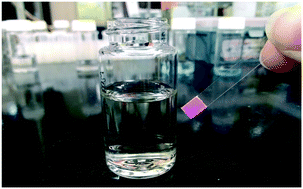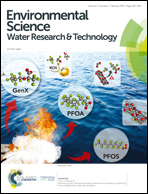Inexpensive microbial dipstick diagnostic for nitrate in water†
Abstract
Amid growing global concern over nitrate contamination of water supplies, there is increasing need for inexpensive, easy-to-use methods for determining nitrate (NO3−-N). In response, we report the development of a low cost, rapid, portable, colorimetric paper bio-strip for determining nitrate in various types of water. The biosensor designed here used E. coli cells impregnated into paper to reduce nitrate to nitrite stoichiometrically. One aspect of the design novelty was to prime the cells with formate allowing quantitative formation of nitrite. The nitrite formed in the paper was then reacted with reagents to produce a high extinction coefficient, maroon-color azo-dye. The azo dye color was calibrated to allow quantitative detection of nitrate in water via visual inspection or smart phone applications. The strips accurately determined nitrate in drinking water samples within 2 ppm error. The optimum range of NO3−-N concentrations detected is 1–10 ppm. Most regulatory agencies set 10 ppm NO3−-N as the highest acceptable limit, and suitable dilutions can be used above that range. The potential co-contaminants lead, sulfate, chromate, borate, and cadmium did not interfere with the nitrate bio-strip, unlike a current commercially available rapid test kit that is negatively impacted by lead. Moreover, the projected life time of the current bio-strip stored at room temperature was over one year, as determined by accelerated aging experiments. In total, this describes a stable, accurate, interference-resistant, portable, and lightweight testing material for nitrate that can be prepared for a few cents per test.



 Please wait while we load your content...
Please wait while we load your content...